
40 minute read
Honoring Our Past
HONORING OUR PAST 25 First 25 for the
In celebration of our 25th anniversary, CSUMB is recognizing a company, a foundation and 23 individuals and couples for helping to make the university what it is today. This is not a comprehensive list by any means — innumerable others have fueled our growth and contributed to our progress — but these are 25 among the many who deserve our thanks.
Advertisement
STORIES BY SOPHIA HUANG MCKENZIE
VISIONARIES 25 First 25 for the
At his 2013 investiture, CSUMB President Eduardo M. Ochoa applauded the leaders whose bold vision and steadfast work paved the way for the university: “(They) saw a base closure with potentially devastating economic impact as an opportunity to turn ‘swords into plowshares,’ and to lay a cornerstone for a new path of economic, social, and cultural fl ourishing for Monterey County and the Central Coast region.”
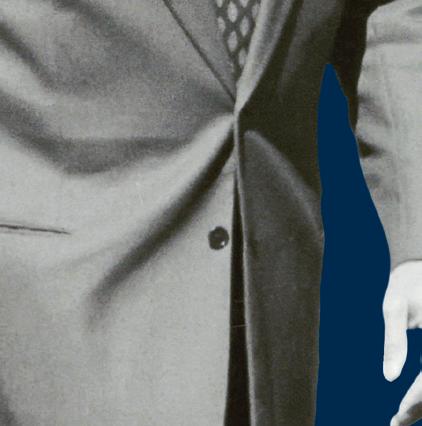

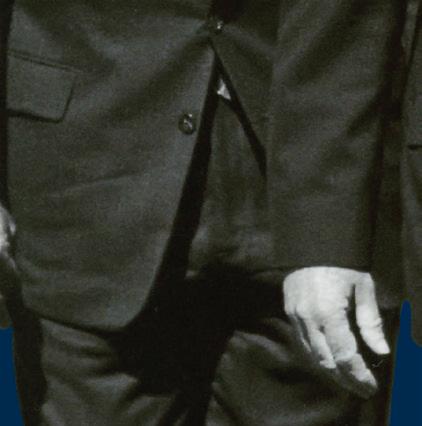

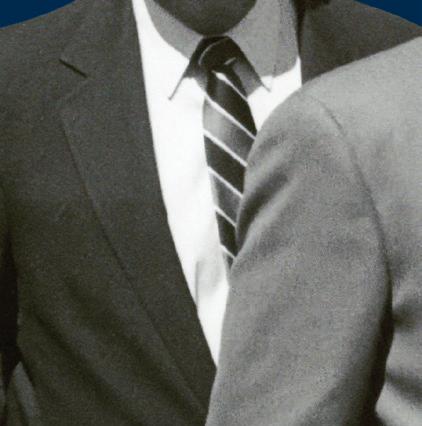
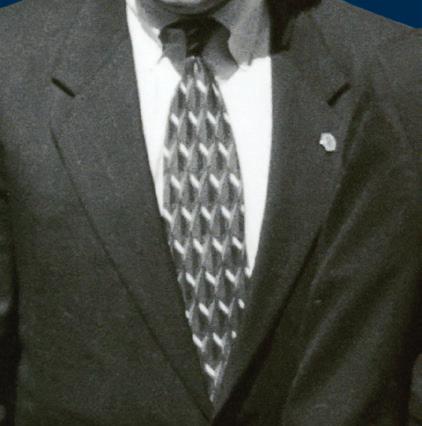

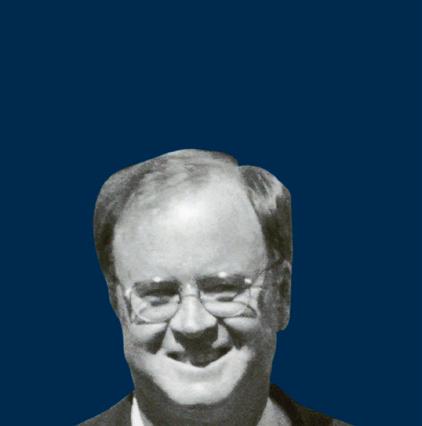




He rose to the heights of power in Washington, D.C., and the world, but Leon Panetta always remembered where he came from. At CSUMB in 2013 for a retirement event celebrating his 50 years of public service, Panetta said: “I’ve never forgotten one thing … Washington is where I work, but this is my home.”
Born and raised in the Monterey Bay area, Panetta was fi rst elected to political offi ce in 1976. He represented the region for 16 years in Congress before ultimately becoming Secretary of Defense in 2011.
When the Army announced plans to close Fort Ord in 1991, suggestions for its reuse ran the gamut from the mundane (offi ce buildings) to “an amusement park on the scale of Disneyland,” the San Francisco Chronicle reported.
Then Congressman Panetta led a community task force that issued a 600-page strategy report for Fort Ord in May 1992 that proposed developing a new California State University (CSU) campus. That set the stage for all that followed.
“Fort Ord represented 25 percent of our local economy. It was a challenge … to develop a reuse plan that really would not only restore our economy but also fi t with what the Central Coast is all about,” Panetta recalled in Monterey County Weekly in April 2019.
“Having CSU Monterey Bay continue to develop as a large campus in the CSU system has been one of the more rewarding aspects of what happened, because we really did in many ways convert swords into plowshares.”
Then White House Chief of Staff Leon Panetta, U.S. Congressman Sam Farr and President Bill Clinton at CSUMB’s inauguration ceremony on Sept. 4, 1995.
A family tragedy led to Sam Farr’s pivotal role in the founding of CSUMB. In the 1960s Farr was a Peace Corps volunteer in an impoverished area in Colombia. During a visit from family, his younger sister was thrown from a horse and died because of inadequate medical care.
“It was this very personal experience that gave me my sense of purpose. I knew I wanted to fight in the War on Poverty and create access to education, healthcare and housing,” Farr said in the keynote speech at CSUMB’s 2017 Commencement.
After hearing about Fort Ord’s closure, then state Assemblyman Farr envisioned transforming the military base into a university. Farr had observed a cycle of poverty among Salinas Valley farming communities similar to Colombia’s. He believed a local gateway to higher education would help break it.
Many rejected and fought his idea, including military and city officials. Undaunted, Farr ran for U.S. Congress in 1993 and won. He then worked tirelessly to establish CSUMB.
“One of the proudest moments of my career was being able to take a vision of higher education in California, and get a new local university placed right here on the sand dunes of Fort Ord,” he said. “Did we win the War on Poverty? No, but we’re making a difference.”
Henry Mello STATE SENATOR
Watsonville native Henry Mello represented Monterey, Santa Cruz and San Benito counties for 22 years. In September 1991, when founding a university at Fort Ord was only an inkling of an idea, Mello invited CSU Chancellor Barry Munitz and other higher ed officials to come see the closing base.
Just weeks later, the CSU Board of Trustees voted to explore the possibilities at Fort Ord, according
to a 1997 report published by The California Higher Education Policy Center. Less than a year after that, the CSU decided to establish a new university at the former military base. Mello, who died in 2004, had “a singular legislative record” because he frequently had more bills signed into law than any other senator, according to The Online Archive of California. Among them was Senate Bill 899, which created the Fort Ord Reuse Authority (FORA) and contained language allowing the federal government to directly convey land to the CSU. The first parcel transferred in July 1994, and the campus eventually received nearly 1,400 acres.
U.S. Congressman Sam Farr told Monterey Bay magazine in 2017, “If Mello had not introduced a bill to create FORA, and that language had not been included, most likely CSUMB would not exist today.”
Founding Year Catalog. “All who are associated with The California State University are energized by its possibilities and inspired by the path it is forging as it begins its historic journey.”
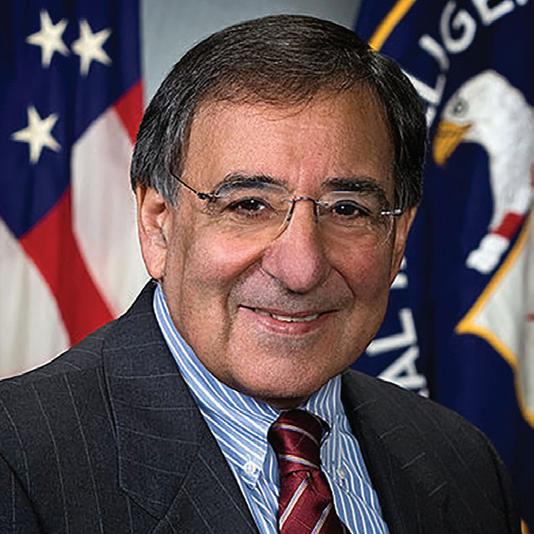
Leon Panetta
Barry Munitz CSU CHANCELLOR
In the early weeks of his new job as chancellor of the largest four-year university system in the nation, Barry Munitz was presented with what he described as “a single, inspired idea”: convert a closing military base into a university.
It had never been done before, but that didn’t dissuade Munitz. Chancellor from 1991 to 1998, he saw an opportunity to meet statewide future enrollment demands while facing budget cuts during an economic downturn.
The product of a free education at Brooklyn College in New York, Munitz understood the critical role of higher education in society.
“Like many Cal State students, I came from an immigrant background, and Brooklyn College was the only place I could go for an education. It was my only prayer for socioeconomic mobility,” he told the New York Times in August 1991.
“This is a campus with unlimited potential,” Munitz wrote in CSUMB’s
Sam Farr

Henry Mello
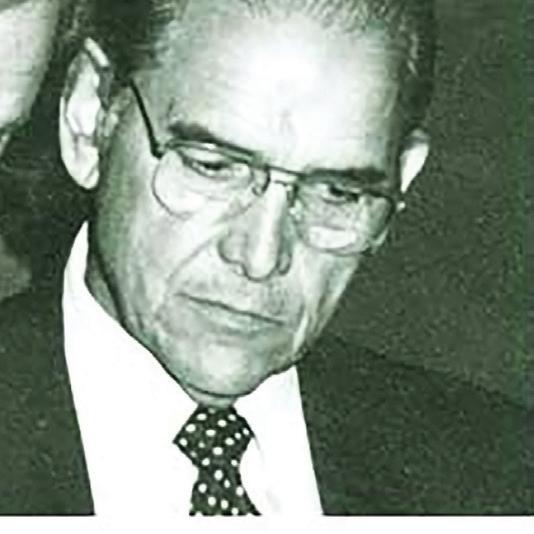

Barry Munitz
PRESIDENTS 25 First 25 for the






At 25 years old, Cal State Monterey Bay is one of the youngest universities in the CSU system and has had just three presidents. All brought a wealth of experience and proven leadership ability to the unique challenges of building and guiding a new university. All accomplished vital goals and advanced the university’s role as a catalyst for educational, cultural and economic development in the region. Each has earned their place in CSUMB’s history. their place in CSUMB’s history.
CSUMB’s founding president arrived in 1994 ready to build a 21st-century university from the ground up. Peter Smith was already a seasoned politician and an education innovator. He had an insider’s experience and an outsider’s perspective.
“He was the right man for the right job. He came with particularly unique credentials,” U.S. Congressman Sam Farr told the Monterey County Weekly in 2005. “To get Peter was key, because he had been a member of Congress and had credibility in Washington. (And) he was a professional educator and administrator.”
In the 1970s Smith helped establish the Community College of Vermont and became its founding president. In the 1980s Smith shifted to politics, serving as a state senator, lieutenant governor and then a U.S. congressman for the state of Vermont. He returned to education in the 1990s as a dean at George Washington University and head of a federal commission studying college education fi nance.
In CSUMB’s Founding Year Catalog, Smith described the university as a “pioneering effort” and “truly a work in progress.”
“As you see our commitment to educate purposeful and humane lifelong learners through using institutional and community resources, you will realize this is no ordinary place,” he said. “You are not here simply to be taught, but to teach and learn actively as well.”
For ten years from 1995 to 2005, Smith guided CSUMB through all stages of accreditation, and student enrollment increased from 650 to 4,000. The university became known for its outcomes-based curriculum, Catalog, Smith described the university as a “pioneering effort” and “truly a work in progress.” educate purposeful and humane lifelong learners through using institutional and community resources, you will realize this is no ordinary place,” he said. “You are not here simply to be taught, but to teach and learn actively as well.” Smith guided CSUMB through all stages of accreditation, and student enrollment increased from 650 to 4,000. The university became known for its outcomes-based curriculum,
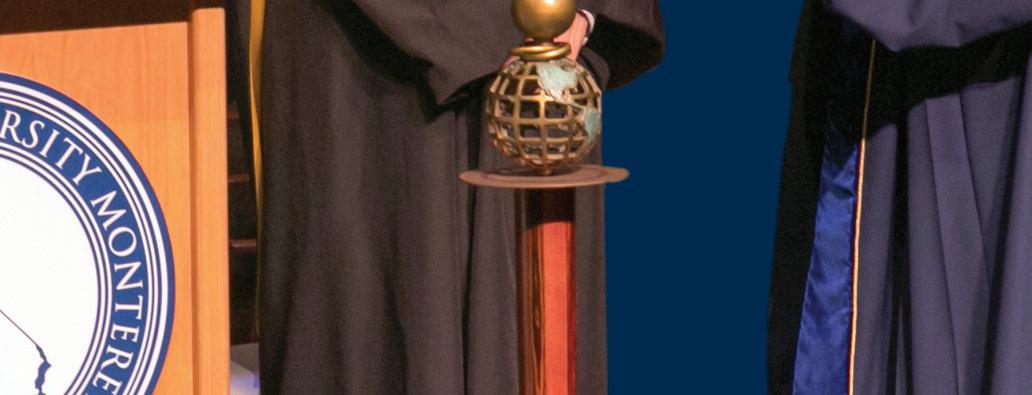
CSUMB President Eduardo M. Ochoa is congratulated by CSU Chancellor Timothy P. White at his investiture on Nov. 15, 2013. CSUMB President Eduardo M. Ochoa is congratulated by CSU Chancellor Timothy P. White at his investiture on Nov. 15, 2013.
a strong science and technology program, its focus on first-generation college students, and its commitment to service learning.
Dianne F. Harrison 2006 TO 2012
Dianne F. Harrison took the helm as CSUMB’s second president with ambitious plans for growth. She announced goals to accelerate student enrollment, embark on an extensive building program, strengthen community partnerships, and increase private fundraising.
She possessed nearly 30 years of experience as faculty and a top administrator at Florida State University, a campus with 40,000 students. Within months of her arrival, CSUMB broke ground on two major construction projects: a baseball/ softball complex and the $64 million Tanimura & Antle Family Memorial Library. Phase two of campus housing and the demolition of more than 100 old army buildings was also on the agenda.
“I plan to act as boldly as I can to move us forward as opportunities arise, to generate positive energy and enthusiasm for this university,” Harrison said in her first State of the University address in September 2006. CSUMB needed Harrison’s optimism in a period of financial insecurity. During her six years as president, the state slashed millions in funding during an economic recession. Harrison still managed to increase enrollment by 50 percent and the number of staff and faculty by 20 percent. She also expanded undergraduate and graduate degrees from 22 to 31, including a new nursing baccalaureate program.
The Salinas Californian in August 2011 lauded Harrison for “being smart and staying nimble” in trying times. She earned a reputation for building strong relationships with public and private organizations, as well as for her commitment to students, academic excellence and strategic leadership.
Like many students at CSUMB, President Eduardo M. Ochoa’s parents came to the United States seeking the American Dream for their children. They immigrated from Buenos Aires, Argentina, when Ochoa was a teen.
“We always stand on the shoulders of our forefathers,” Ochoa told the Monterey County Weekly in 2013. “My parents came here to give us a better life, and I’m reaping the benefits. I hope to share that with my kids and other immigrant kids just beginning the climb.”
Ochoa earned a master’s degree in nuclear science and engineering and a Ph.D. in economics and worked as a professor, dean and provost at multiple California universities. In 2010 the Obama Administration appointed him U.S. assistant secretary for post secondary education. Ochoa became president of CSUMB in 2012 and focused on the role of the university as a steward of the community. He told The Chronicle of Higher Education in 2018: “At CSUMB we take responsibility for advancing our region socially, economically and culturally. … We have a strong mission of social equity and social justice and providing access (to education) for underserved communities.”
In 2014 Ochoa founded Bright Futures Educational Partnership, a collaborative initiative involving education, business and community leaders, to improve “cradle-to-career” educational outcomes in the region. Doing so would have the greatest impact by sending positive ripple effects through multiple aspects of life, including poverty, health, crime and the local economy, he said.
Furthering innovation has been another hallmark of Ochoa’s presidency. In 2015 the state bestowed two Awards for Innovation in Higher Education upon CSUMB totaling $8 million. The programs honored were CSin3 — a collaboration with Hartnell
College that allows students to earn a computer science degree in three years — and a developmental math course called Math Huge.
“For CSUMB, the context for innovation is in looking for ways to do what we do better, more efficiently and effectively. This is something that has been part of the DNA of the campus since its inception,” Ochoa said.
Student enrollment and graduation rates have hit new highs under Ochoa’s leadership. The university expanded to three commencement ceremonies in 2018 and graduated a record 2,348 students in May 2019. Ochoa began his eighth year as president in August 2019.
Peter Smith
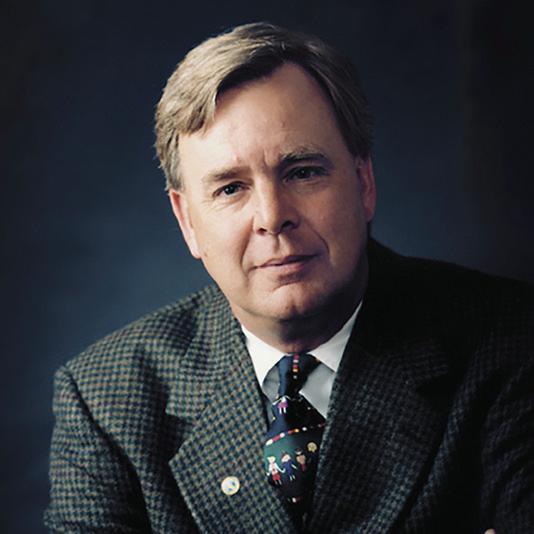
Dianne F. Harrison


Eduardo M. Ochoa
STAFF 25 First 25 for the












When CSUMB opened its doors to students in 1995, CSU Chancellor Barry Munitz praised the university as “a campus with unlimited potential” employing “one of the fi nest faculties and staffs in the country.” These four are among those who have left an indelible mark on the university.


Just about everything at CSUMB has changed in 25 years, Police Chief Earl Lawson says. He arrived on campus on Christmas Day 1994 after starting his law enforcement career a few years earlier at Cal Poly Pomona. He became CSUMB’s police chief in 2010.
In the beginning, the buildings were “pretty much boarded up, locked up, locked down,” he said. “It was literally the way the military had left it. Most of the internal doors had the keys hanging in the locks.”
The police spent much of their time early on dealing with “Ording,” people scavenging for military souvenirs and anything of value, Lawson said. A bowling alley at what is now Parking Lot 903 was a prime target. He would spot students wearing bowling shoes with “FOB” on the toe for “Fort Ord Bowl.”
Lawson is known for collaborating with other agencies and taking on leadership roles. He has served as president of the Monterey County Chief Law Enforcement Offi cers Association and fi rst chair of the California State University’s Chiefs’ Group.
He’s proudest of his people (many of his young offi cers are CSUMB alumni), the sense of community they foster, and the police department’s role on campus.
“(We) incorporate what we called ‘Crime Prevention Through Environmental Design’ to eliminate criminal opportunities from capital construction projects, from small renovation projects, even the landscape on campus,” Lawson said. The department works closely with its campus partners to make the
Earl Lawson has served with the University Police for 25 years, including nine years as chief.
university as safe as possible, he said. “It’s now built into the culture of the campus.”
Bobbi Bonace DIRECTOR OF INTERCOLLEGIATE ATHLETICS
Bobbi Bonace returned to CSUMB in February 2019 as one of the first 12 inductees to the new Otter Athletics Hall of Fame. The university has come a long way from “recruiting people off the bike trails,” she told The Lutrinae student newspaper.
Bonace joined the staff in 1996 as CSUMB’s first athletic director. She brought 30 years of experience from UC Santa Barbara and Washington State University (WSU), where she was director of WSU’s gay and lesbian program.
At CSUMB she founded the athletics program, started 10 Otter athletic teams, helped build the kinesiology program, chaired the department, and advocated for social justice and equality. When Bonace retired in 2007, friends and colleagues created a Bobbi Bonace Scholarship for female students pursuing sportsrelated careers.
“I think we do things differently than other universities,” Bonace said of CSUMB. “We open doors for people to be who they actually are and create a climate here where that’s actually possible.”
Richard E. “Hank” Hendrickson CSUMB’S FIRST FULL-TIME EMPLOYEE
Richard E. “Hank” Hendrickson seemed the ideal choice for CSUMB’s first full-time employee. He had history at Fort Ord as garrison commander from 1985 to 1989, and had already been working on the new university project for a year while employed at San Jose State University. Hendrickson shared his experiences in the CSUMB History written in 2004.
“It wasn’t that big of a change,” Hendrickson said about switching to academia from the military. “At Fort Ord, I was in charge of churches,
grounds, schools — anything other than troops. The same type of work is done at a university. There’s a chain of command in the military, and there’s a chain of command in the university.” CSUMB hired Hendrickson as Executive Dean in 1992. Thinking of an official name arose as one of his earliest duties. Hendrickson and CSUMB’s two other full-time employees considered the possibilities — UFO, the University of Fort Ord, was one of the rejects — and polled the tenants of 915 Hilby Ave. in Seaside, the university’s first office. At the end of that year, the CSU approved the name submitted: California State University, Monterey Bay.
Work on campus accelerated after the federal government awarded $15 million to CSUMB in July 1994. Many higher ed experts said adequately founding a university would take three to four years. Hendrickson and his team had 13 months.
CSUMB opened its doors on schedule in Fall 1995. Hendrickson retired six years later as Vice President for Administrative Services.
social worker, Haskell provided direct counseling and psychological services and was a key developer of CSUMB’s master of social work program. She launched and chaired campus and community committees related to social justice and health, and served in leadership roles for local, state and national organizations. In 2013 she co-authored an award-winning book, “Combined Destinies: Whites Sharing Grief About Racism.”
Her many accolades include the 2015 Social Worker of the Year for the California chapter of the National Association of Social Workers, and the 2019 Welcoming Diversity AntiRacism Award from NCBI.

Caroline Haskell SENIOR DIRECTOR FOR HEALTH AND WELLNESS SERVICES
Caroline Haskell left big shoes to fill when she retired in June 2019 after 23 years. The founding director of the Personal Growth and Counseling Center (PGCC), she oversaw Health and Wellness Services which grew to include the Campus Health Center, Campus Chaplaincy, Health Promotion & Education, Student Disability Resources, the Campus Sexual Assault Advocate and the campus affiliate of the National Coalition Building Institute (NCBI). “We practice an integrated model of wellness, utilizing complementary and alternative forms of treatment,” Haskell wrote in 2017. “Intrinsic to our approach is the focus on student development, emphasizing personal responsibility, learning, growth and empowerment.”
A board-certified, licensed clinical
Bobbi Bonance
Hank Hendrickson


Caroline Haskell
FACULTY 25 First 25 for the
Excitement built steadily in the summer before CSUMB’s opening. San Francisco Gate reported in June 1995 that 5,200 people had applied for 30 available faculty positions. These are fi ve of those founding faculty, whom Founding President Peter Smith called men and women of “courage” and “extraordinary quality.”

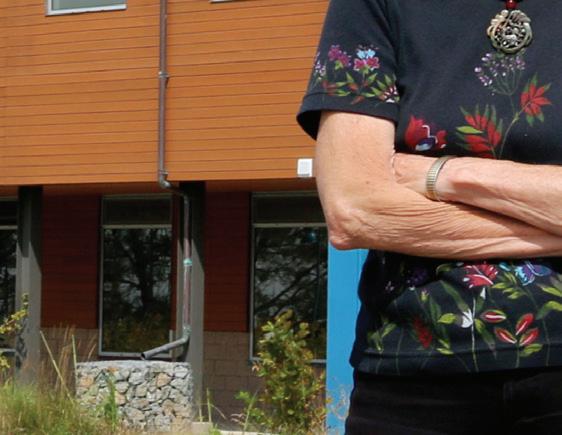





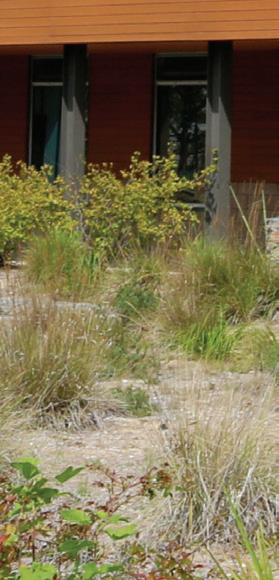

Marsha Moroh likes a challenge. She became the fi rst woman to earn a doctorate in computer science at the Polytechnic Institute of New York in 1979. After 25 years as a professor in New York, she moved across the country to help found CSUMB.
“I came to CSUMB because of the incredible challenge of starting a new university,” she told the Otter Realm student newspaper in 2015.
Moroh joined faculty working around-the-clock, doing everything from unpacking computers to reading resumes. It was exhausting, yet exhilarating. “We felt like we were really building something,” she said. Moroh hired virtually all the College of Science (COS) faculty, oversaw the design and construction of the Chapman Science Academic Center, and led the college to national recognition.
When she retired in 2015, Moroh credited the faculty for the college’s phenomenal success: “My greatest accomplishment is the faculty I hired.”
William D. “Bill” Head COLLEGE OF SCIENCE, PROFESSOR EMERITUS

William D. “Bill” Head left the Bahamas and one of the most productive marine labs in the world to come to CSUMB.
“It is rare that an interdisciplinary group of educators has the opportunity to design a science curriculum without the constraints of pre-existing academic departments,” Head wrote in the Journal of Geoscience Education in 2006.
Head, who holds a doctorate from Oregon State University, founded CSUMB’s interdisciplinary Earth Systems Science & Policy Division. In 2009 he started the Undergraduate Research Opportunities Center (UROC), recognized as one of the best
Marsha Moroh outside the College of Science building in 2015.
undergraduate research programs in the country. Head was also pivotal in CSUMB securing federal grants to support under-represented and fi rst-generation students in mentored research and entry into graduate programs.
Prior to his retirement in 2015, Moroh said, “If it wasn’t for Bill, we probably wouldn’t have a science building.”
James W. Rote COLLEGE OF SCIENCE, PROFESSOR
James W. Rote loved the sea and spent his life exploring and conserving it. He fi rst traveled the world’s oceans in the Navy, then became a marine scientist.
He earned a doctorate from Stanford University and built an exceptional career as a government environmental advisor, bridging the divide between science and public policy. As senior scientifi c advisor to the National Oceanic and Atmospheric Administration (NOAA), Rote was crucial to the designation of the Monterey Bay National Marine Sanctuary in 1992.
At CSUMB he helped launch the innovative, interdisciplinary COS program linking natural science, physical science, technology, economics and policy. Physical limitations caused by multiple sclerosis forced him to resign in 1997. He died in 2006.
The college established The James W. Rote Distinguished Professorship in Marine Science and Policy in 2003 to honor Rote and his legacy. The professorship aims to inspire ocean stewardship through education and outreach. It funds research scholarships and events including graduate seminars, a lecture series and a political candidates forum.
Dorothy M. Lloyd COLLEGE OF EDUCATION, DEAN EMERITA
Dorothy Lloyd began her career as a public school teacher before moving to higher education and playing
instrumental roles in the founding of not one, but two CSU campuses. Lloyd, who earned a doctorate from the University of California, Los Angeles, joined CSUMB in 1994 as founding dean of the College of Professional Studies. She previously helped establish CSU San Marcos in 1989.
During Lloyd’s tenure at CSUMB, enrollment in the college increased from 128 to more than 1,500. She oversaw undergraduate and graduate programs in business, education, liberal studies, health and human services, public policy, and human performance and wellness.
A Black History Month event in 1999 honored Lloyd as a “hero, mentor and educator” and for her work to eliminate sex discrimination and prejudice, the Otter Realm reported. Granting her dean emerita status in 2006, CSUMB declared: “Dr. Lloyd helped CSUMB overcome the challenges of its fi rst years, earn accreditation, and send forth countless students to become highly successful in their chosen careers.”
CSUMB’s master’s in education program. She also aided in creating lower-division learning requirements, a scholarship program, and the service learning curriculum.
Sleeter has published more than 140 articles, 19 non-fi ction books and two novels. She became CSUMB’s fi rst professor emerita in 2003.
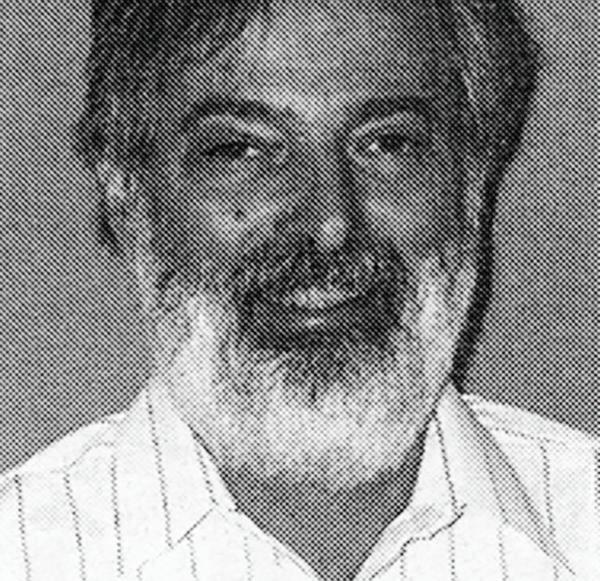

William D. “Bill” Head
Christine Sleeter COLLEGE OF EDUCATION, PROFESSOR EMERITA
Christine Sleeter’s experiences with desegregation in the 1970s sparked her interest in multicultural education. A White teacher, she was assigned to a racially and ethnically diverse, working-class high school in Seattle, Washington. She later received a doctorate from the University of Wisconsin and became an internationally-known researcher, author, speaker and education reformer.
“There is not a simple bag of tricks or techniques, but rather a lifelong project of engaging students, trying to make teaching relevant to communities, studying from different traditions and perspectives, and continually changing yourself and your teaching,” Sleeter said in 2016 in National Youth-At-Risk Journal. Sleeter led the development of
James W. Rote
Dorothy M. Lloyd
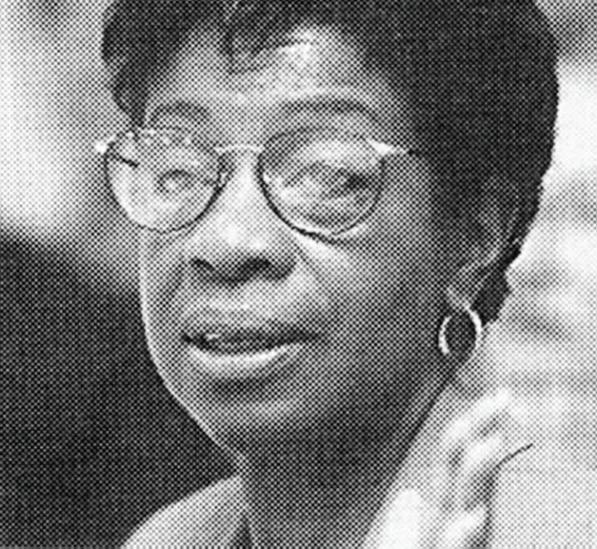

Christine Sleeter
DONORS 25 First 25 for the




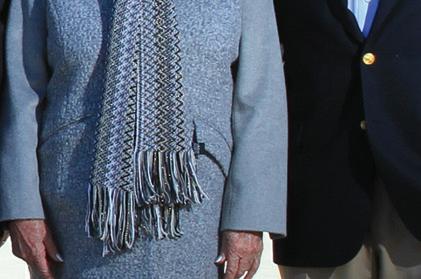










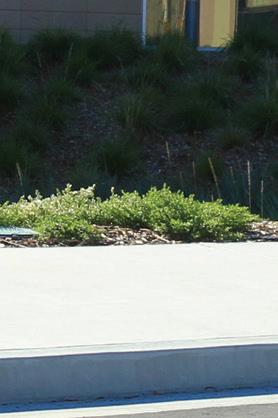


From state-of-the-art buildings, to transformative scholarships, to game-changing stadium lights, these donors helped make it possible. Vice President of University Advancement Barbara Zappas wrote to donors in 2017: “Your generosity provides a lifelong memorable college experience for our students who move into the world with the skills and values to make them successful.”

Joel and Dena Gambord They came from humble beginnings, yet Joel and Dena Gambord became inspiring philanthropists. The Gambords gave $10 million to CSUMB in March 2015, the largest donation the university has received to date.
“We have been blessed by the good fortune during our lifetime to have the resources to create an opportunity to assist others in our community,” the Gambords said.
In recognition of their generous gift, the university named its new academic building at the time — the $43 million home of the College of Business and the School of Computing and Design — the Joel and Dena Gambord Business and Information Technology (BIT) Building.
Both Gambords are no strangers to the Monterey Bay area. Dena’s father, a carpenter, helped build Fort Ord. Her mother worked in sardine canneries in Monterey.
During the Korean War, Joel was drafted and sent to Fort Ord for boot camp. After the war, he started a small business as a contractor and built a real estate development empire in Silicon Valley.
“There are much larger universities to which we could contribute, but our gift would get lost in the shuffl e,” Joel said. “At CSUMB, we know whatever we do there, we will have an impact.”
Bob and Sue Antle
From the start, Bob and Sue Antle were among CSUMB’s staunchest supporters. Dedicated philanthropists, they gave of their time, talent and treasure to the university
“I remember (Bob) coming up to me and saying it was the best thing to happen: to establish this campus, and to give young people here, who

CSUMB President Eduardo M. Ochoa (left) with donors Dena and Joel Gambord outside the Business and Information Technology building named for them.

might never have the chance, the opportunity to get a good education and to improve their lives,” Leon Panetta recalled about Bob at a memorial service in 2014.
The Antles met at Watsonville High School and were married for 58 years. At a young age, Bob took over the produce company started by his father, Bud Antle. He became a leader in the industry and co-founded produce giant Tanimura & Antle. Bob served as vice chairman of the Panetta Institute and president of the CSUMB President’s Council for many years. CSUMB awarded him an honorary doctorate in 2007. Sue helped found and support CSUMB’s “Have a Heart for Students” scholarship fundraiser for 20 years.
The family established the Bob Antle Memorial Scholarship in 2014 for first-generation students from farmworker families. In Bob’s obituary, the family called CSUMB’s Tanimura & Antle Family Memorial Library “one of Bob’s proudest accomplishments.”
Upon Sue’s death in March 2018, CSUMB President Eduardo M. Ochoa praised her decades of fundraising work: “(She) helped open the door of opportunity for many first-generation students and transformed lives.”
Monterey Peninsula Foundation If you’ve cheered for the Otters at a nighttime sporting event or enjoyed the glow of the new stadium lights shining in the distance, thank the Monterey Peninsula Foundation (MPF). A $1.5 million grant, one of the foundation’s largest gifts ever, enabled CSUMB to install 16 stadium lights and host night games for the first time. “It’s going to make a huge impact on our ability to market and promote our programs, and invite the community out to our campus to see what we believe is really great NCAA Division II competition,” Athletic Director Kirby Garry told the Monterey Herald in January 2019, as the project neared completion.
The foundation began in 1937 as
a small charity golf event hosted by Bing Crosby and became the famed AT&T Pebble Beach Pro-Am. It has since distributed $135 million to hundreds of non-profits in Monterey County. CSUMB has received more than $8.4 million from the foundation, a donor for 23 consecutive years.
Tanimura & Antle
Led by patriarchs George Tanimura and Bob Antle, two longtime Salinas Valley farming families joined forces in 1982 to form the industry-leading farming company Tanimura & Antle. The company is committed to funding education programs in the community, and nowhere is that more visible than at CSUMB.
In honor of the company and its founders, the university named its centerpiece building the Tanimura & Antle Family Memorial Library. The company gave the largest private donation of $4 million for the library’s construction.
Ahead of its dedication in December 2008, the Monterey County Weekly described the $64 million library as “architectural performance art” with “a transcendent edifice of soaring glass and sculpted concrete.” The biggest building on campus at 136,000 square feet, the library serves as the social and academic hub of the university, and an enduring testament to Tanimura & Antle’s support.
perhaps Navy veteran and science student John Freutel said it best in his condolence message: “Thank you for the great science building. Students here are learning to use science to improve the lot of all life on Earth. All the good things that come about because of our training come from your generosity and investment in our future.”
Bob and Sue Antle
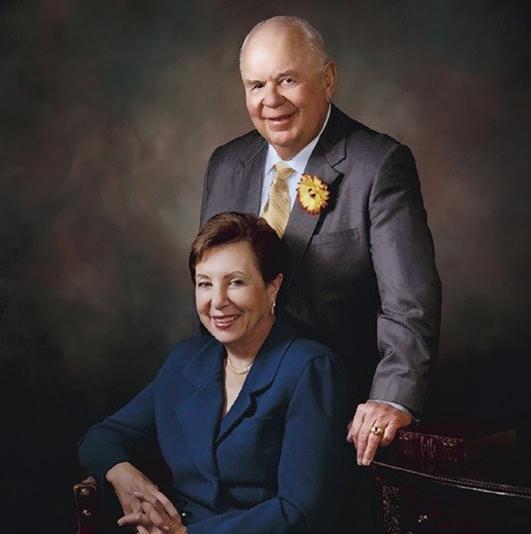
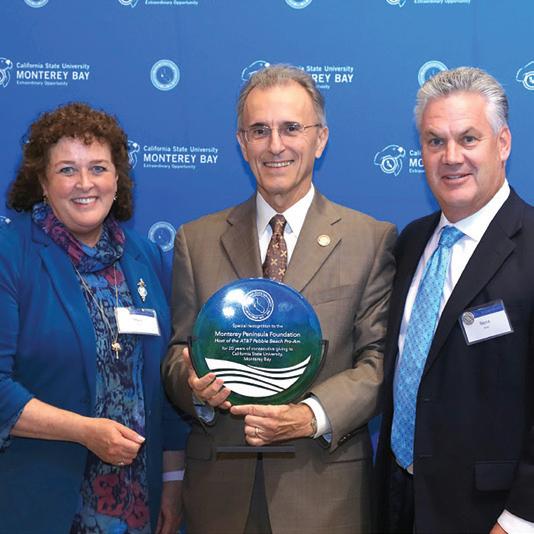
Monterey Peninsula Foundation
Patricia & Robert Chapman In fall 2003, CSUMB opened the Patricia and Robert Chapman Science Academic Center, the university’s first new building. The state-of-the-art facility was named for the Chapmans, who gave $2.5 million toward construction of the $24.5 million building.
“From my first day here, I have been impressed with the quality of the university leadership and faculty, the accomplishments of the students, and the strong teamwork ethic at CSUMB,” Patricia said.
When Robert died in August 2016,
Tanimura & Antle


Robert and Pat Chapman
ALUMNI 25 First 25 for the
Cal State Monterey Bay has graduated more than 20,000 students in its fi rst 25 years and prepared them for success in every industry and fi eld, from agriculture to zoology. Here we highlight four of our outstanding alumni who are making an impact in their communities, the region, the state and the world.

The youngest of six children born to immigrant farmworkers, Merlyn Calderon Schultz was the fi rst in her family to attend college. CSUMB changed the trajectory of her life, and she became a national labor union leader and a U.S. diplomat.
At CSUMB she honed an interest in international politics and was named Outstanding Senior for her community service work. After graduating, Schultz went to work for the State Legislature in Sacramento and later became California political director for the United Farm Workers of America, the country’s largest farm workers union. She quickly rose in prominence, and was elected UFW’s national vice president in 2008.
Schultz began her foreign service career with the U.S. Department of State in 2011. She has since served in Mexico, Cameroon and Costa Rica. Last spring Schultz returned to the United States to accept a state department role in Washington, D.C., helping leaders stay informed and handle crises around the world. “CSUMB prepares you for the world. Literally, I’m proof of that,” Schultz said.
Read more about Schultz in the Alumni department story on Page 42.
Jakob Heuser B.S. TELECOMMUNICATIONS, MULTIMEDIA, AND APPLIED COMPUTING, 2004 M.A. INTERDISCIPLINARY STUDIES, 2006
As a freshman in a basic computer class at CSUMB, Jakob Heuser discovered his talent for teaching when he began helping struggling classmates. He worked as a tutor throughout college, and parlayed that ability and other skills into a phenomenal career in the tech world.
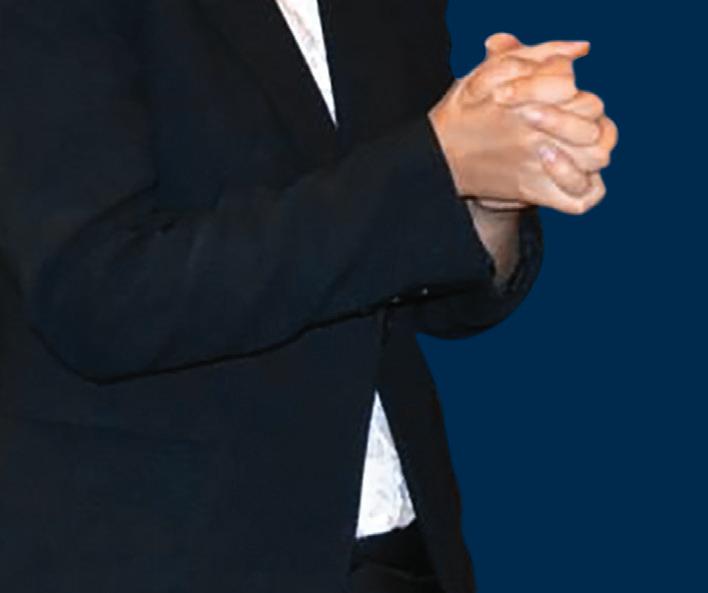
Merlyn Calderon Schultz at the U.S. Embassy in Yaoundé, Cameroon, in January 2015.
Linkedin, the top social network for professionals, hired Heuser in 2008 as one of its first 10 web development team members. Heuser became Principal Web Developer, and the team grew to over 120 in the six years he worked for the company.
Heuser joined the leadership of Pinterest in 2015, another social networking giant. He left two years later “to focus on solving the problem of satisfaction in careers and the workplace” as an entrepreneur, advisor and engineer, he said. Heuser credits CSUMB for providing him with the interdisciplinary skills to succeed. “CSUMB gave me aspects of the education you might get from a business school or art academy, all rolled into one,” he said.
Heuser gives back to his alma mater as a leading alumni donor and a member of the Dean’s Leadership Council for the College of Science. He speaks to computer science classes, facilitates student participation in industry events and conferences, and promotes diversity and women in technology. In appreciation, the faculty lounge in the Gambord Business Information and Technology Building is named for him.
Iris Peppard B.A. INTEGRATED STUDIES, 2003
The award-winning, non-profit Everyone’s Harvest began as Iris Peppard’s senior capstone project at CSUMB. She believed everyone deserved access to fresh, affordable and locally-grown organic produce, including low-income families. Peppard founded Everyone’s Harvest in 2002 and served as its executive director for 14 years. She shepherded it into a thriving organization which sponsors multiple community food programs.
Everyone’s Harvest currently operates certified farmers’ markets and farm stands in Marina, Pacific Grove and Salinas. Unlike most farmers markets, all accept food
stamps. Everyone’s Harvest also sponsors healthy cooking workshops for youth, and community gardens which employ homeless workers. Peppard’s work has not gone unnoticed. Monterey County named her Outstanding Woman of the Year in 2007. Edible Monterey Bay magazine honored her with its “Local Hero” Award in 2012. Monterey County Weekly included Peppard in its “25 for the Next 25” in 2013 as someone shaping the region’s future.
“My success is not just my own. It’s because of everyone involved. It’s about a movement. It’s about food justice,” Peppard said of the accolades. In 2016 Peppard returned to the Reno, Nevada, area where she was born and raised, and is now working for the One Truckee River conservation and stewardship program.
served on more than 20 committees and task forces. In the community Woodridge worked with the Boys and Girls Club, Monterey County AIDS Project and more. At graduation Woodridge received the President’s Exemplary Achievement Award given to one senior for their contributions to CSUMB and the community.
Woodridge has remained focused on service, working for non-profit and social justice organizations for more than 25 years. Now a manager with the County of San Mateo Health System’s Whole Person Care pilot program, Woodridge helps the most vulnerable people with multiple chronic and potentially life-ending conditions to improve their physical, mental and social health. MB
Bethtina Woodridge B.A. HUMAN COMMUNICATIONS, 1999
When CSUMB welcomed students for the first time in August 1995, Bethtina Woodridge was one of 33 Pioneers, the university’s first freshmen. Woodridge, who uses the pronouns they, them, their and we, recalled that time in the 2016 keynote speech for CSUMB’s annual Spotlight on Service.
“(We) were excited young people, committed to social justice. We wanted to make sure everyone understood the value of giving back, learning in, from and with community,” Woodridge said.
In a CSUMB Service Learning class, they first heard the quote that became their motto for life: “Service is the rent you pay for living, it is the very purpose of life, not something you do in your spare time.”
“At CSUMB, we had incredible mentors who modeled and reinforced hard work and struggle,” Woodridge said.
On campus Woodridge helped start and lead groups including the student government organization and
Jakob Heuser
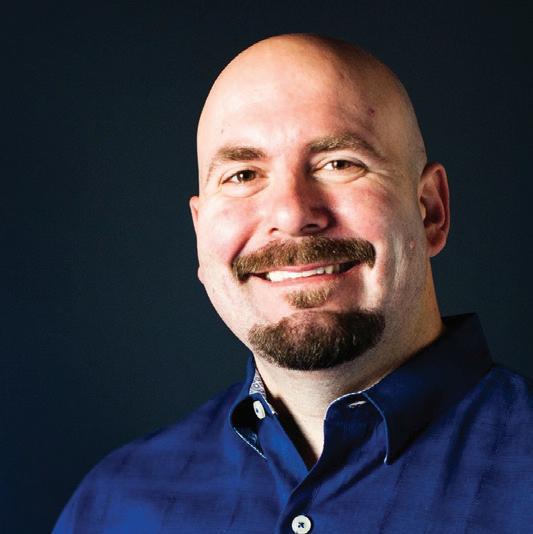

Iris Peppard

Bethtina Woodridge





